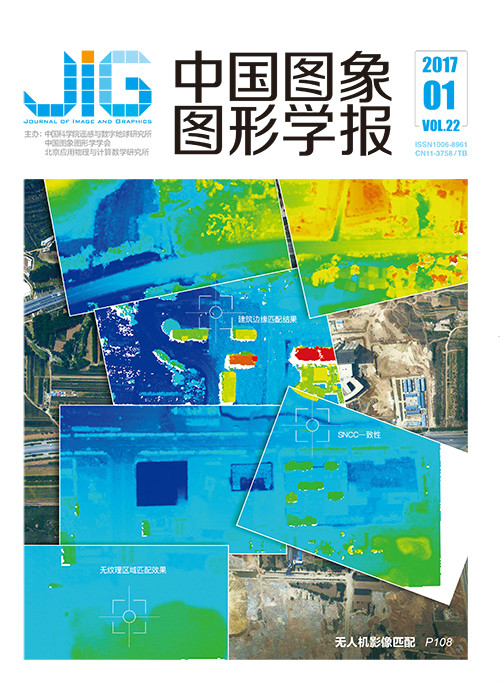
大位移变分光流计算的快速算法
摘 要
目的 多尺度方法的提出解决了传统HS(Horn Schunck)算法不能计算大位移光流的问题,但同时也增加了迭代运算的步数。为加快迭代收敛速度,研究大位移变分光流计算的快速算法,并分析其性能。方法 将用于加快变分图像处理迭代运算的Split Bregman方法、对偶方法和交替方向乘子法应用到大位移光流计算中。结果 分别进行了精度、迭代步数、运行时间的对比实验。引入3种快速方法的模型均能够在保证精度的同时,在较少时间内计算出图像序列的光流场,所需时间为传统方法的11%~42%。结论 将3种快速方法应用到大位移变分光流计算中,对于不同图像序列均可以较大地提高计算效率。
关键词
Fast algorithms for large displacement variation optical flow computation
Liu Bowen, Wei Weibo, Pan Zhenkuan, Wang Shourun(College of Computer Science and Technology, Qingdao University, Qingdao 266071, China) Abstract
Objective The Horn-Schunck (HS) algorithm is one of the most popular optical flow estimation methods. Many scholars have proposed improved HS algorithms to improve accuracy. However, the efficiency of the HS algorithm remains an important problem because the HS algorithm requires much iterative computation. The HS algorithm is based on a differential method, and it only can compute small displacement optical flow. A multi-scale method has been proposed to solve the problem that a differential method cannot compute large displacement optical flow, but the efficiency of this method is slower than before. Fast methods are studied in this research to enhance efficiency. Method In the variation image restoration domain, fast methods for accelerating iteration have yielded good results, and some of the fast methods have been applied to small-displacement optical flow computation domain. In this study, Split Bregman method, dual method, and alternating direction method of multipliers are applied to large displacement optical flow computation for accelerating iteration. Result The accuracy, iteration, and time of different methods are compared quantitatively and qualitatively. The three fast methods all can obtain results with accuracy that is the same as that of the traditional method in lesser time. The time required for fast algorithms is 11%~42% of the time required for the traditional method. Conclusion Computational efficiency can be improved greatly by applying these three fast methods to large displacement variation optical flow computing for different image sequences.
Keywords
optical flow computation large displacement optical flow multi-scale method Split Bregman method dual method alternating direction method of multipliers
|



 中国图象图形学报 │ 京ICP备05080539号-4 │ 本系统由
中国图象图形学报 │ 京ICP备05080539号-4 │ 本系统由